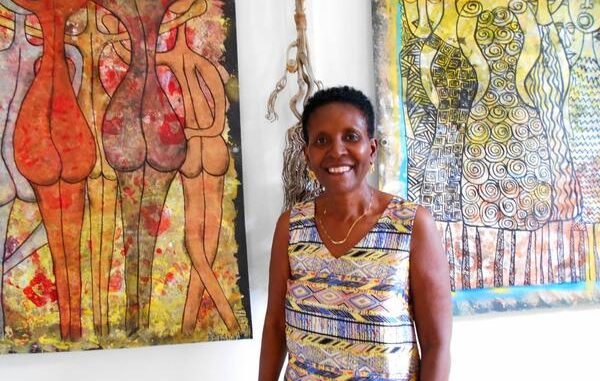
From December 15 to 22, 2023, Patricia Lollia presents about forty works (paintings and sculptures) at the Pavillon de la Ville in Pointe-à-Pitre. “La Pli Bèl Anba La Bay” is the name of this very beautiful exhibition prepared by the self-taught visual artist who is a follower of recycling and began her artistic career in 2019.
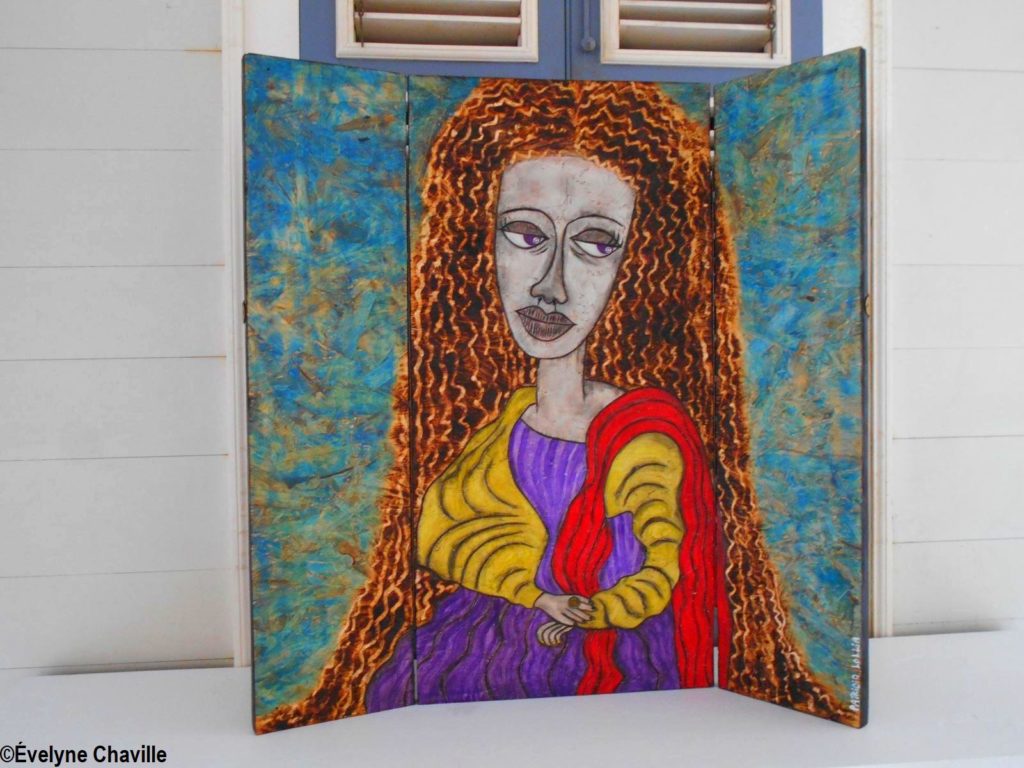
Kariculture : How many exhibitions have you already had? You’re a young, fresh artist… (Laughs)
Patricia Lollia : (Laughs) I don’t know, because between solo and group exhibitions, I probably participated in about ten…
Kariculture : How many solo exhibitions?
P. L. : At the Pavillon de la Ville, there was the exhibition “Sé dèyè bwa ki ni bwa”, this year it’s “La pli bèl anba la bay”, I had a solo exhibition at The Factory, I also had a solo exhibition at Art Ruche, so I think I’ve had 4 solo exhibitions, the rest are group exhibitions, there are also online exhibitions that were organized as part of the Pool Art Fair when Covid happened. Thierry Alet had the idea of organizing the first online editions. There are the Pool Art Fairs, my first was in 2019, and this year’s edition was really great because there were around 80 artists (…), many of them young emerging artists (…).
Kariculture : That’s a lot of exhibitions for a “young” artist, in quotation marks…
P. L. : Why “in quotation marks”? (Laughs)
Kariculture : (Laughs) There must be a bubbling on in your head. Where do you get all these ideas, all this inspiration?
P. L. : There’s definitely a bubbling.
Kariculture : Don’t you sleep at night?
P. L. : That’s right, I don’t often sleep at night, I sleep very little.
Kariculture : Your husband will ask for a divorce if this continues… (laughs)
P. L. : (Laughs) I often sleep in the next room so as not to wake him up…
Kariculture : So, you get up on the sly because you have an idea?
P. L. : And even for my texts, I work on them at night, putting them down on paper immediately, because sometimes when I wake up, I don’t have what I’d thought of… I work a lot. The problem is that I don’t have a studio; until now, I’ve been squatting in the library at home. Sculptures take space, so I will try to create my studio to really express myself, I think.
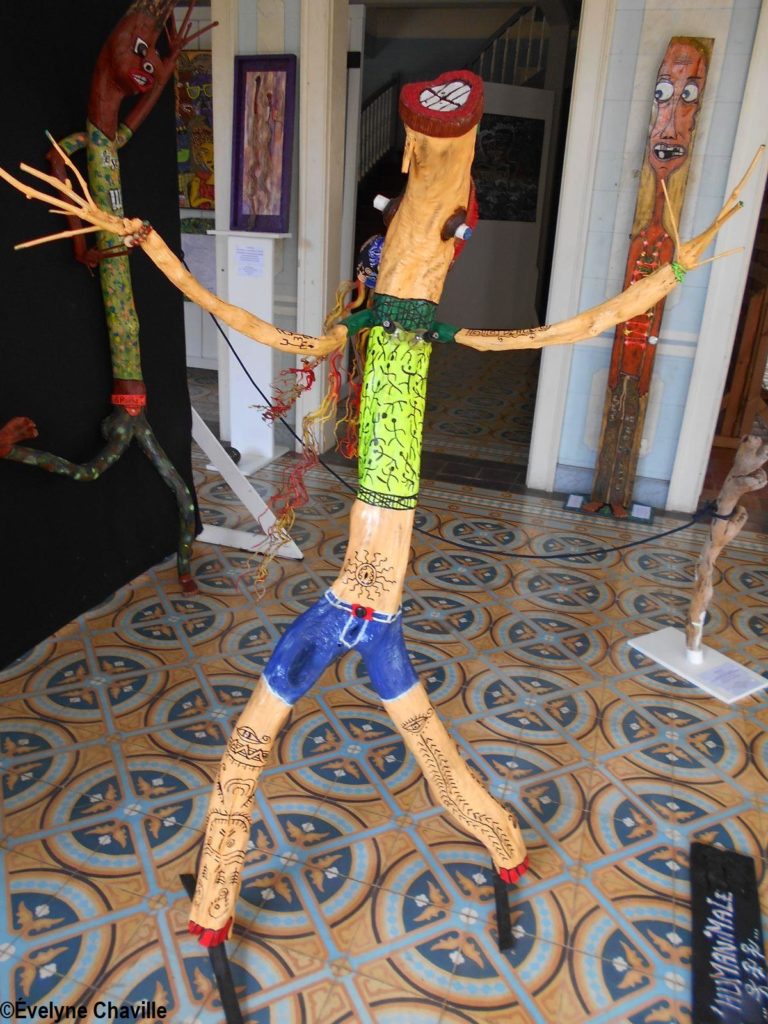
Kariculture : We see that there’s a lot of color, it’s intentional, it’s a way of showing people that Covid is over, that the dark years we experienced are almost forgotten, almost behind us (because we never know)? Do you want to make people forget bad memories?
P. L. : I already love color, I think color is life, it’s hope, it’s also freedom, so I think it’s important to surround yourself with this multitude, this explosion of colors, but nevertheless I have a whole series of works that I’ve called “En clair obscur”, I burn the wood with a blow torch…
Kariculture : Pyrography…
P. L. : I always burn, in color or in chiaroscuro, it’s not just painting, there are various techniques used. My chiaroscuro work is another aspect of the work I can offer. It’s always life, because it’s always this reflection on relationships, on human beings, on humanity…
Kariculture : Your work is very focused on recycling, you were the first to go into the burnt houses of Pointe-à-Pitre in search of wood and planks to make works of art, you also collect driftwood on the shores of Sainte-Anne and Le Gosier and elsewhere, and now you’ve tackled advertising banners. How did you come up with this idea?
P. L. : As I drive by car I often see these banners that are completely detached, and above all they pollute our environment. The events they announced and advertising have long since passed and, despite this, these banners are not removed and, on the contrary, there are increasingly numerous. So one day, I had the idea of recovering one of the banners, I said to myself that it’s simply a canvas so I can paint on it and, since then, I’ve been creating works on this new medium.
Kariculture : How many do you have here?
P. L. : There are two here, these two as well…
Kariculture : There are several…
P. L. : That one too… This work, I made it as the cover for Eroll Nuissier and Patricia Lépine’s book “Irma, mon amour”, on an advertising banner (…). I hadn’t read the book, so I worked from the elements given by the authors (…).
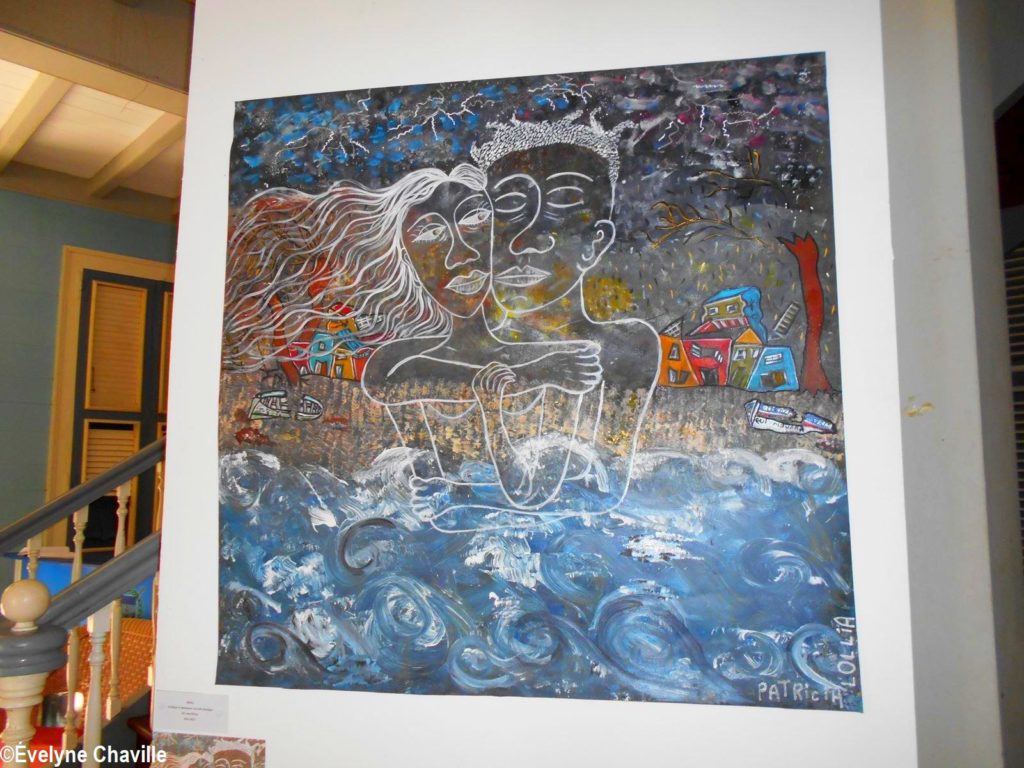
Kariculture : Are you always innovating?
P. L. : That’s right (…) It was a really great first experience, I think you have to face with challenges every time, and not say to yourself: “I haven’t done that yet, I’m not doing it”. No, why not? I try (…).
Kariculture : Recycling is very important to you? Are you taking the pressure of nature?
P. L. : We’re seeing it more and more with all the climatic phenomena… We’re relieving ourselves. To live healthily, we can’t keep living in this waste, this garbage and this waste.
Kariculture : You magnify this waste?
P. L. : I give it a second life.
Kariculture : Every work here – there are paintings, there are sculptures – has a story…
P. L. : My concept is a work, a story. When I create a work, I write the story. I have to say that it was my daughter’s idea. The other day, she reproached me for it; in fact, when I started, she said to me: “You have to write the story”. At first, I didn’t really understand what she was telling me; I thought I had to write my story, my career in visual arts. She said to me : “No, no, when you make a work, you write the story of the work”. And it’s true that now I do it, and the writing work completes the pictorial work and gives even more life to the characters I create; they tell their story and we find emotions, feelings, ideas, often messages through these humorous, sarcastic, sometimes cynical stories, but it’s also life.
Kariculture : You’re a “young” artist, in quotation marks…
P. L. : (Laughs)
Kariculture : When you look back, even if it’s not many years but it’s still your career, can you see that you’ve made progress?
P. L. : Yes, I can see it. I can see the evolution. I say to myself: it’s unbelievable, first paintings, first attempts… I had never exhibited these two paintings, these are my first paintings, that’s why I put “private collection”…
Kariculture : It looks like Modigliani with the nose…
P. L. : (Laughs) Yes, and the head bowed… So I dared to present them. I can see the evolution.
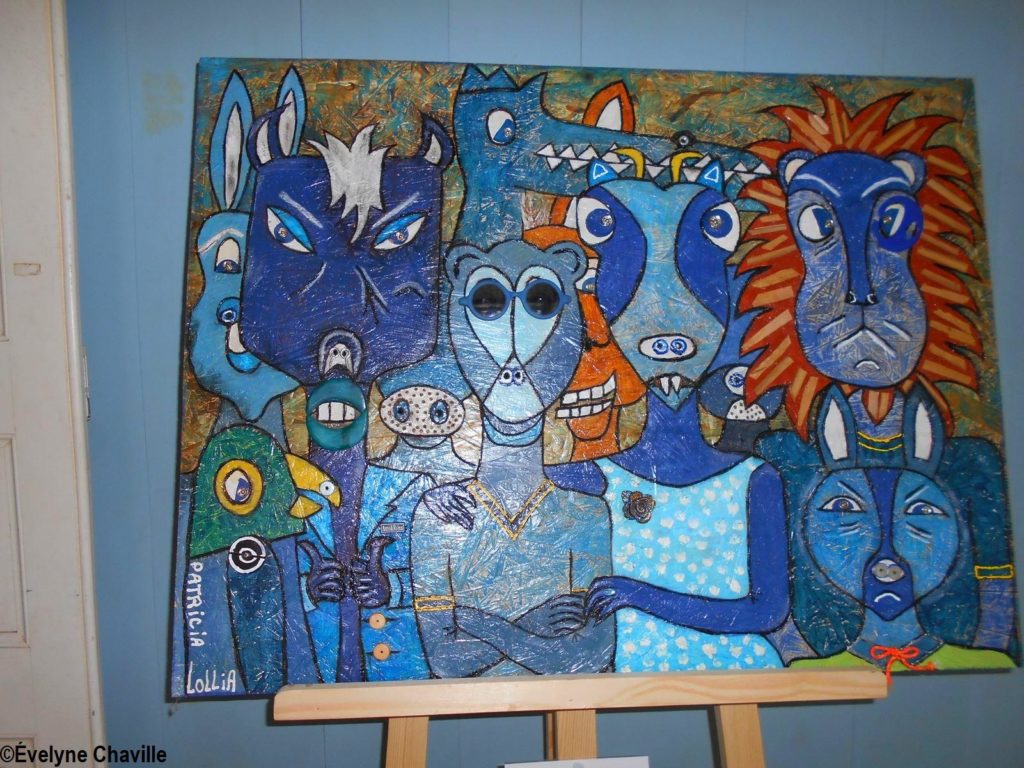
Kariculture : Do you have more and more confidence in yourself? You can do a lot of paintings at home and not show them, because you’re not confident, you’re scared of what other people will think of you…
P. L. : What I say is that “exhibiting is necessarily exposing oneself”, and to do so, you really have to be ready, because then you’re under fire from critics, whether positive or negative, and you have to be able to hear what the audience feels and receives. In any case, in his work, this is important because the artist, when he works, is alone with himself, but it’s not a dialogue between himself, it’s necessarily something that we offer to see, so these exchanges with the audience are important. People who’ve been following me for a long time also see this progression, and often they can’t believe it, they say: “It’s not possible, what’s going on?” (laughs)…
Kariculture : She was hiding her talents from us…
P. L. : It explodes, it explodes… It’s true that I often can’t sleep at night, the ideas are there, but materially it’s not immediately possible…
Kariculture : How many works do you have here?
P. L. : There are about forty.
Kariculture : How long did you take to make the sculptures and paintings?
P. L. : I work fast because I work a lot. Sometimes I say to myself: “Patricia, kaw ka fè-la?* You’re retired, you should have rested”… It’s true that it’s exhausting (…) In fact, I personally get a lot of pleasure from what I do, and I think I have to enjoy it. I don’t live from my art, I don’t have this pressure to “sell at all costs”. I have this freedom, and if people buy, it gives me great pleasure, because I know that the work will live elsewhere, it will be seen, it will go on its way (…). It’s a story that begins with the artist and continues with the person who acquires it and offers it to others. For me, that’s what art is all about.
*Patricia, what are you doing?














































